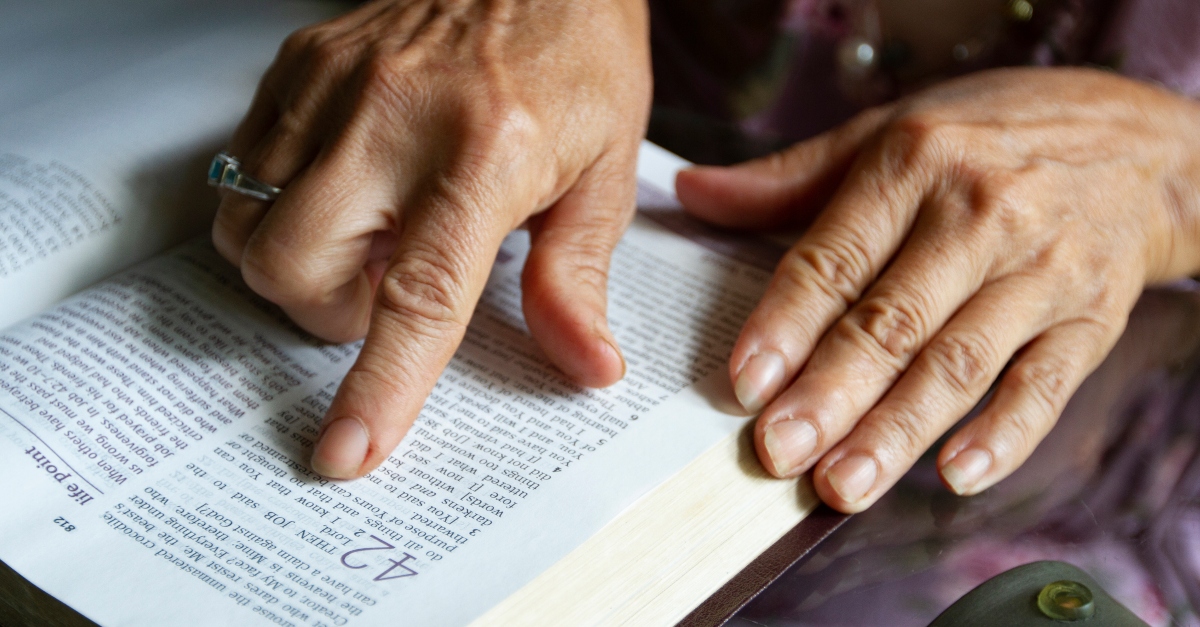3 Practical Reasons to Read the Bible ‘Out of Order’

What “out of order” means may depend on what Christian you ask. Some believe “in order’ indicates reading each book based on when scholars predict the writer had penned that particular book, in other words, in chronological order.
Others would say “in order” means reading the Bible from cover to cover, from Genesis to Revelation.
No matter which Christian you ask, what happens when you shake up this order? Should we read Esther one week and Ephesians the next? Should we stick to either reading the Bible from cover-to-cover or chronologically? Do Christians have good reasons for the order in which they read their Bibles?
In this article, we’ll dive into the organization of the Bible, exploring why our modern Bibles seem to have the consecutive books out of their chronological order. We’ll lightly touch on the benefits of reading the Bible from cover to cover, or in chronological order. Then we’ll discuss some reasons to shake it up and read the Bible out of order.

Why Is the Bible Organized the Way it Is?
If you check the dates of when scholars believe each book to be written you’d know that not every book between Genesis and Revelation falls under the same linear timeline. For instance, scholars argue as to which Gospel came first: Matthew or Mark.
Also the timelines from the Kings books and Chronicles appear to overlap in several places.
So why would scholars organize the Bible in such a way, if timelines don’t align or books appear out of order, historically speaking?
As illustrated in this article, the canon of the Bible is organized by genre. The first five books: Genesis, Exodus, Leviticus, Numbers, and Deuteronomy make up something known as the Pentateuch or Torah, the books of the law.
We have several other genres such as books of history, Wisdom literature (or books of poetry), major and minor prophets, etc. The New Testament also follows a genre pattern. We have the Gospels, History (Acts), Epistles, General letters, and then the Apocalyptic visions of John in Revelation.
Although many books in a genre would have been composed roughly around the same time—for instance, David and Solomon wrote most of the Wisdom literature—timelines do get a bit wonky.
What Are the Benefits and Downsides of Reading the Bible in Order?
Many people, when they go to read the Bible, will do so from cover to cover. Unless they have purchased a devotional book that instructs them to read a certain passage, a self-guided quiet time tends to follow this pattern.
The benefits of reading the Bible in cover-to-cover order include seeing the whole story of God’s salvation unfold from Creation through Revelation. Reading the Bible from Genesis to Revelation can help us to stay organized and on task. If we know we’ve read 34 books and have 32 to go, we can be encouraged in our progress. Not to mention, we won’t experience a whiplash effect of reading the Epistles one day and books of History the next.
Downsides of cover-to-cover reading might include that if someone reads the Bible from cover to cover consistently, they may get bored with the process. Certain stories become blasé if read too many times. Plus, for those who have not read the Bible from cover to cover, you’ll notice how Leviticus and Numbers don’t always provide the most dynamic reading experiences. People may give up and then only read Genesis and Exodus, and not progress further.

What Are the Benefits and Downsides of Reading the Bible Chronologically?
This ushers in the proponents for reading the Bible in chronological order, in the order in which the books were written, as outlined here.
If you follow this order, one day you may read Genesis 8-11, and the next Job 1-5, as Job 1 occurred before Genesis 12.
Benefits of chronological Bible reading begin with understanding the Bible in a new light. After all, we can follow Scripture’s timeline throughout history. This also helps us to avoid the Leviticus/Numbers slump that often happens when we read the Bible from cover to cover. This method can also help us to avoid gaps in the historical timeline that occur when one reads the Bible straight through instead of in chronological order.
Downsides of reading the Bible chronologically include the whiplash effect when trying to flip back and forth between passages of the Bible, because the texts overlap. Plus, not all scholars agree precisely when certain books are written, so we may never know if we have truly nailed down the correct timeline.
Furthermore, if we follow a plan similar to the Bible Study Tools one linked above, we may grow weary of the process. After all, it doesn’t have the same thrill as knowing you’ve read 54 books and only have 12 to go. Because passages are spliced in the timeline, there’s a lot of back and forth.
3 Practical Reasons to Read the Bible Out of Order
So what happens when we decide to follow a Bible-reading plan based on a theme? Or perhaps we choose to read Scripture at random. Are there benefits to doing so? Let's look at three:
1. It Breaks Up the Monotony
Have you ever noticed, when you read the same passage again and again that your eyes tend to skip over parts? We fail to engage with Scripture if we read the Bible in the same way. By mixing up the order, we allow our brains to see the text in new ways. Even if we’ve read the same passage a dozen times, if the passage comes after having read a different book, we may see the verses in a new light.
2. Several Out-of-Order Plans Already Exist
We may worry that we’ve chosen the wrong passage to read for today or that we’ll miss out on another great lesson in Scripture if we have to create the plan on our own.
Luckily for us, several plans exist on how to read the Bible in an atypical order. Some of these include reading passages based on a theme. Others include a devotionals written by a Christian that instruct us to read a certain passage (or number of passages) each day.
3. Many Christian Traditions Follow This Pattern in Church
If you grew up in a Lutheran church, you may have noticed how the pastor read a passage from the Old Testament, from the Gospel, and from the Epistles (and often from a Wisdom book such as Psalms).
They do this for a number of reasons. It allows Christians to be immersed into every genre in Scripture, every period of history in which the Bible takes place, and helps remind them of the bigger picture. If we only read from the Law for several months or only from the minor prophets, we may lose sight of that overall picture.
But reading the Bible out of order helps us to grasp the overarching narrative of God’s plan for our salvation.

Conclusion
There’s no “right way” to read the Bible. Many believers read Scripture from cover to cover, others do so chronologically, and others mix it up on occasion. Reading the Bible out of order allows us to pull ourselves out of the monotonous slump that causes us to glaze over certain passages.
It can also help us to overcome that information overload that happens in Leviticus through Numbers. However you find that the Bible comes alive for you, explore that—and enjoy being in God's presence.
Recommended for You:
How Can I Love My Bible if I Don't Enjoy Reading It?
How to Read the Bible: The Beginner's Guide to Reading the Bible
10 Bible Reading Plans to Start This January
10 Books of the Bible You Should Read Again and Again
Photo Credit: ©GettyImages/jjneff
Hope Bolinger is an acquisitions editor at End Game Press, book editor for hire, and the author of almost 30 books. More than 1500 of her works have been featured in various publications. Check out her books at hopebolinger.com for clean books in most genres, great for adults and kids. Check out her editing profile at Reedsy.com to find out about hiring her for your next book project.
Originally published September 10, 2020.







